Вы здесь
Birds in Sairam-Ugam park.
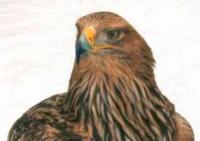
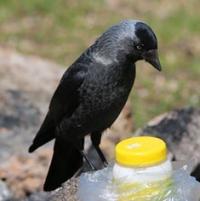
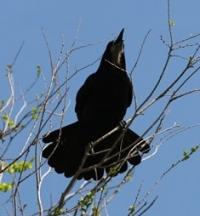
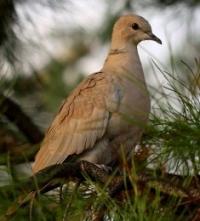
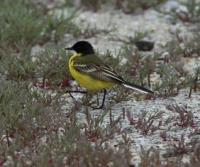
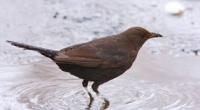
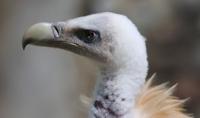
Ornithological tours in Sairam-Ugam park.
“Some birds are not meant to be caged, that's all. Their feathers are too bright, their songs too sweet and wild. So you let them go, or when you open the cage to feed them they somehow fly out past you. And the part of you that knows it was wrong to imprison them in the first place rejoices, but still, the place where you live is that much more drab and empty for their departure”
Stephen King, Rita Hayworth and Shawshank Redemption. “A Story from Different Seasons”.
Excursions to Sairam-Ugam Park.
Over a 140-year period of ornithological research, 300 species of birds have been recorded in the Sairam-Ugam State National Natural Park and adjacent territories. During expeditionary work, we met 131 species, 10 of which are listed in the Red Book of the Republic of Kazakhstan.
The greatest diversity of species was noted for the Karzhantau mountains (103 species), the Talas Alatau (98 species), the Ugam ridge (92 species) and less for the Mashat and Daubabin mountains (66 species), the mountains of Kazygurt (63 species) and the environs of Maidantal (48 species ).
It should be borne in mind that in the latter case only the upper reaches of the mountains and rivers were examined. Of the 117 indicator bird species identified for the Western Tien Shan, 30 species were not found. Of the latter (Gypshimalayensis), partridge (Perdixdauurica) has never been found here.
Due to the fact that the expeditionary work was carried out between the end of the spring and the beginning of the autumn migrations of birds, a number of species were not found on the span. These include: steppe (Circusmacrourus) and marsh harrier (C. aeruginosus), lapwing (Vanellusvanellus), herbal grasshopper (Trignatotanus), snipe (Gallinagogallinago), gull (Larusridibundus), river tern (Sternahirundo), (Anthusrichardidae, yellow) Motacillaflava), (Prunellaatrogularis), Indian (Acrocephalusagricola), (A. arundinaceus) and (A. scirpaceus), (Phoenicuruserythrogaster), (Lusciniasvecica).
Other species, such as the steppe kestrel (Falconaumanni), pheasant (Phasianuscolchicus), (Crexcrex), brown (Columbaeversmanni) and rocky dove (C. rupestris) house owl (Athenenoctua), kingfisher (Alcedoatthis), and coastal (Riparid) the swallow (Ptyonoprognerupestris), Indian lark (Alaudagulgula), (Montifringillanivalis), (Rhodospizaobsoleta), apparently, nest here not annually, that it was not possible to explore these places.
(Sylvianisoria), once the usual nesting species of the region, has been found only on migration since the 80s of the last century (Kovshar and Chalikova, 1992). In addition, the division of indicator species upon occurrence into ecosystems is considered unjustified.
Birds are active in their movement and can be present anywhere. Thus, in the analysis of species, some of the indicator species that we encountered in biotypes not characteristic of them fell out. So (Dendrocoposleucopterus) was seen in the forest belt of the foothills, and in the mountains - in the thickets of willow, (Acanthiscannabina) and Indian sparrow (Passerindicus) - in light forests, yellow-headed wagtail (Motacillacitreold) - in the meadows of the Alpine and subalpine zones.
Thus, the number of indicator species found in individual ridges (out of 87 species) was distributed as follows: Talas Alatau - 77 species, Ugam - 68 species, Karzhantau - 67 species, Mashat and Daubaba - 58 species, Kazygurt - 39 species and Maidantal - 38 species.
On average, their number in each of the individual mountain systems exceeded 68%. It should be borne in mind that each of the selected ridges significantly differs from each other in location, altitude, remoteness from the anthropogenic landscape, geological structure, climatic conditions and other factors.
All this was reflected in the formation of the ornithological fauna of each of the individual sites. So, in Maidantal, isolated from the foothill valleys by high ridges, no birds of the foothills were found, and, conversely, in Mashat, Daubab and Kazygurt - high-altitude birds.
As it turned out, only 11 species are common to all sites - the dwarf eagle (Hieraaetuspennatus), common kestrel, hoopoe, gray flycatcher, blackbird. On all the ridges, except for Kazygurt, there are quail, large turtledove, common dipper, sackcloth and bluebird, as on the latter, typical nesting sites for these 5 species are completely absent.
At the same time, only here a blue stone thrush (Monticolasolitarius) was found, which half a century ago was very uneven and indefinite, was distributed along the Ugam (Korelov, 1956), it was common in the Talas Alatau (Shulgin, 1965; Shevchenko, 1948; Kovshar, 1966), we met only once.
Similar examples can be carried out further. In principle, the ornithofauna of the ridges is significantly different from each other. Even the size and nature of the stay of the same species are different. Therefore, only the comprehensive protection of the biological complex of all the ridges will save all the biodiversity of the region.
Thus, analyzing the data obtained by previous researchers, there is a clear decrease in the number of some species of birds, most of which are currently on the Red Book. So, we did not meet here peregrine falcon (Falcoperegrinus), saker (F. cherrug) and black kite (Milvusmigrans) who once inhabited the entire mountainous part of the region (Korelov, 1956; Dolgushin, 1962; Kovshar, 1966).
The numbers of the vulture (Neophronpercnopterus), white-headed vulture (Gypsfulvus), black vulture (Aegypiusmonachus), snake-eater (Circaetusgallicus) and (Strixaluco) have markedly decreased. We consider the main reason for this regular disturbance of birds by humans at nesting sites, as well as a reduction in feed reserves.
We also did not meet a brown dove, once numerous in the Ugam valley (Korelov, 1956). Due to the widespread plowing of fields, haying of wild lands, the number of larks has significantly decreased. Thus, the steppe (Melanocoryphacalandra), (M. bimaculata), and the small-billed (Calandrtllaacutirostris) larks (Korelov, 1956), which were once numerous in Karzhantau, were met by us only in an insignificant amount. The Turkestan zhulan, a formerly common nesting species of the region, found in juniper from the settlements to the upper limits, became rare everywhere (Korelov, 1956; Kovshar, 1966).
This year at nesting, it was recorded only in the elfin. At the same time, a pheasant (Phasianuscolchicus) appeared in the foothills of the Talas Alatau, which has not been observed here for more than 50 years (Kovshar, 1966).
Apparently, the numbers of Buzzard (Buteorufinus), Vahir (Columbapalumbus), bluebird, and red tit, which we marked on nesting where we had not seen before, increased. The life of man and his surrounding nature have been connected with each other since ancient times.
Over the centuries, there has been a relationship between a number of bird species and humans, which, together with it, are developing new territories. So in our case, in places of constant residence of a person, the chamomile (Streptopeliadecaocto) and the small doves (S. senegalensis), the common starling (Sturnusvulgaris), the field sparrow (Passermontanus), the long-tailed and black-faced shrike, hoopoe, and the hoist rose up in the mountains (Hirundorusticd) and the red swallow (J. daurica), myna (Acridotheres).
In addition, an increase in forest area due to artificial planting, as well as their age, increase the concentration of Orioles, Magpie (Picapica), Paradise (Terpsiphoneparadisi) and Gray Flycatcher, Bukhara Tit, Southern Nightingale, Blackbird, (Otusscops), White-winged Woodpecker and Vahir (Columbapalumbus).
In foothill areas where intensive farming is carried out, a number of species nest in the surrounding fields, canyons, rocks and other lands not used by humans. Due to the abundance of feed, the number of birds in such places is an order of magnitude higher (Kazygurt, Mashat, Daubaba), than in other biotopes.
In the case of changes in biotopes as a result of human activities, the species composition of birds changes significantly, as happened in the vicinity of the village of Zhabagly as a result of felling of trees and shrubs (Chalikova, 2001). This is especially dangerous for rare species, as may lead to their complete disappearance in the region.
Therefore, the main condition for maintaining the species diversity of birds is to prevent changes in their natural habitat.
Authority:
http://www.sugnpp.kz
Photos
Alexander Petrov.







